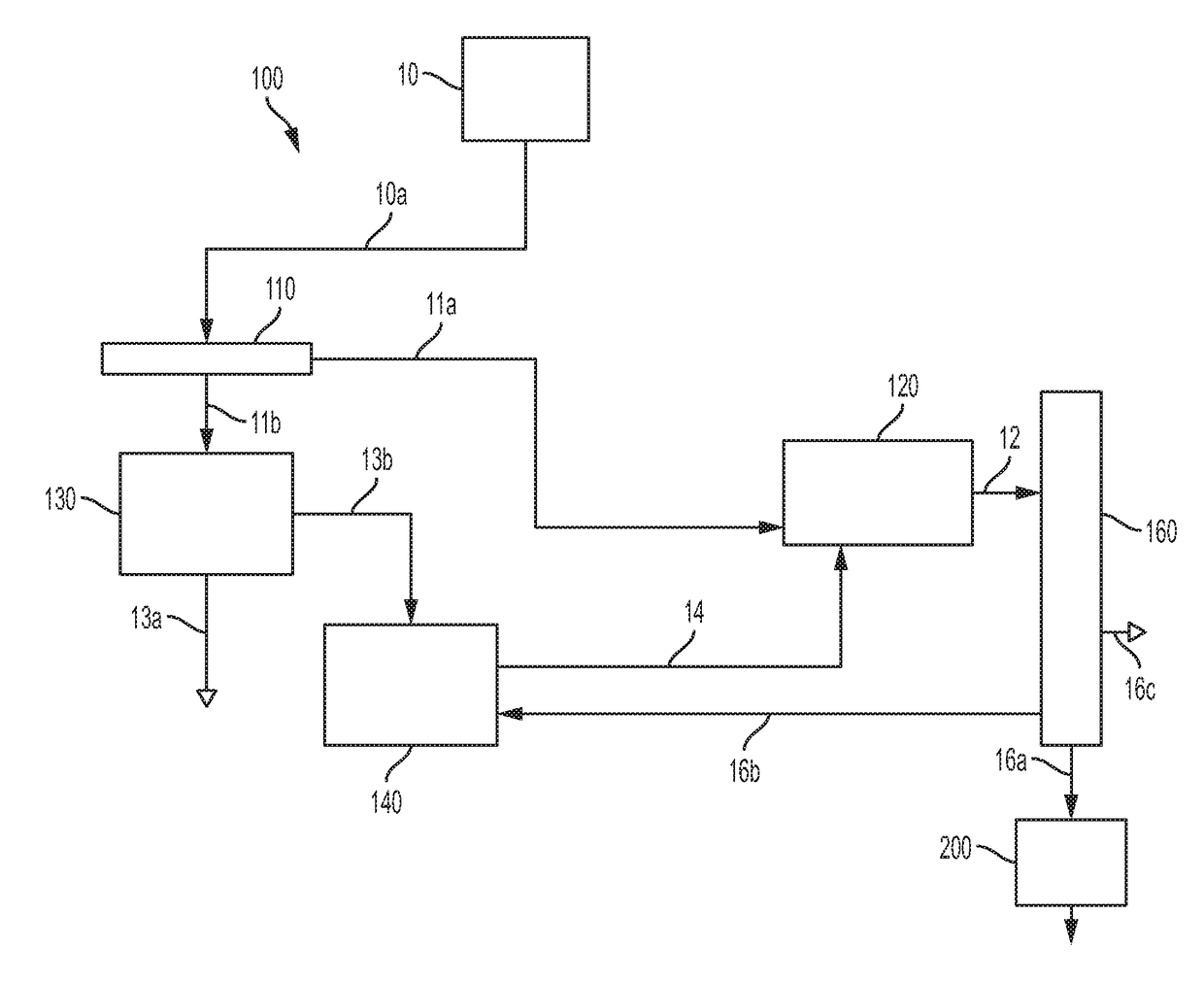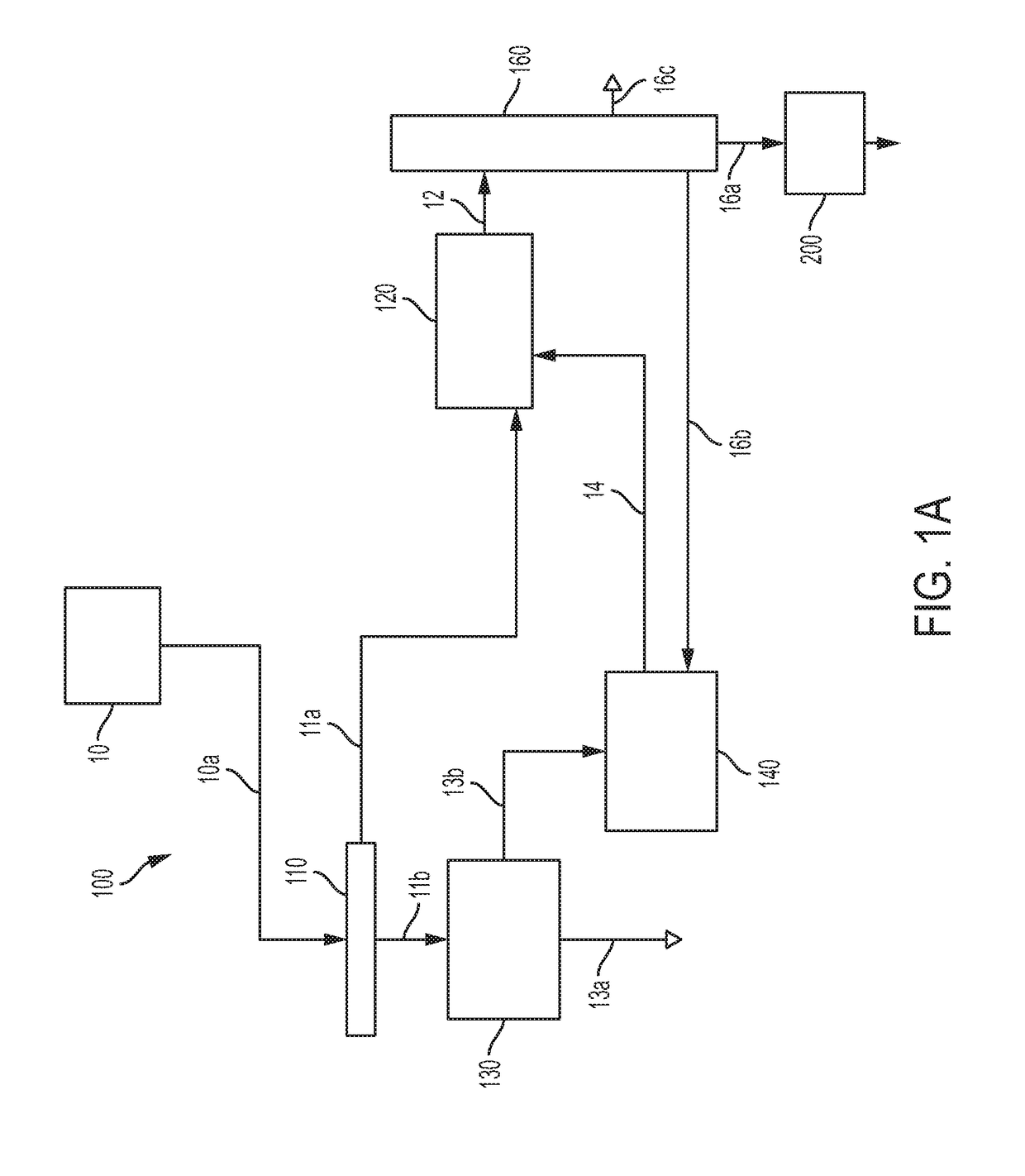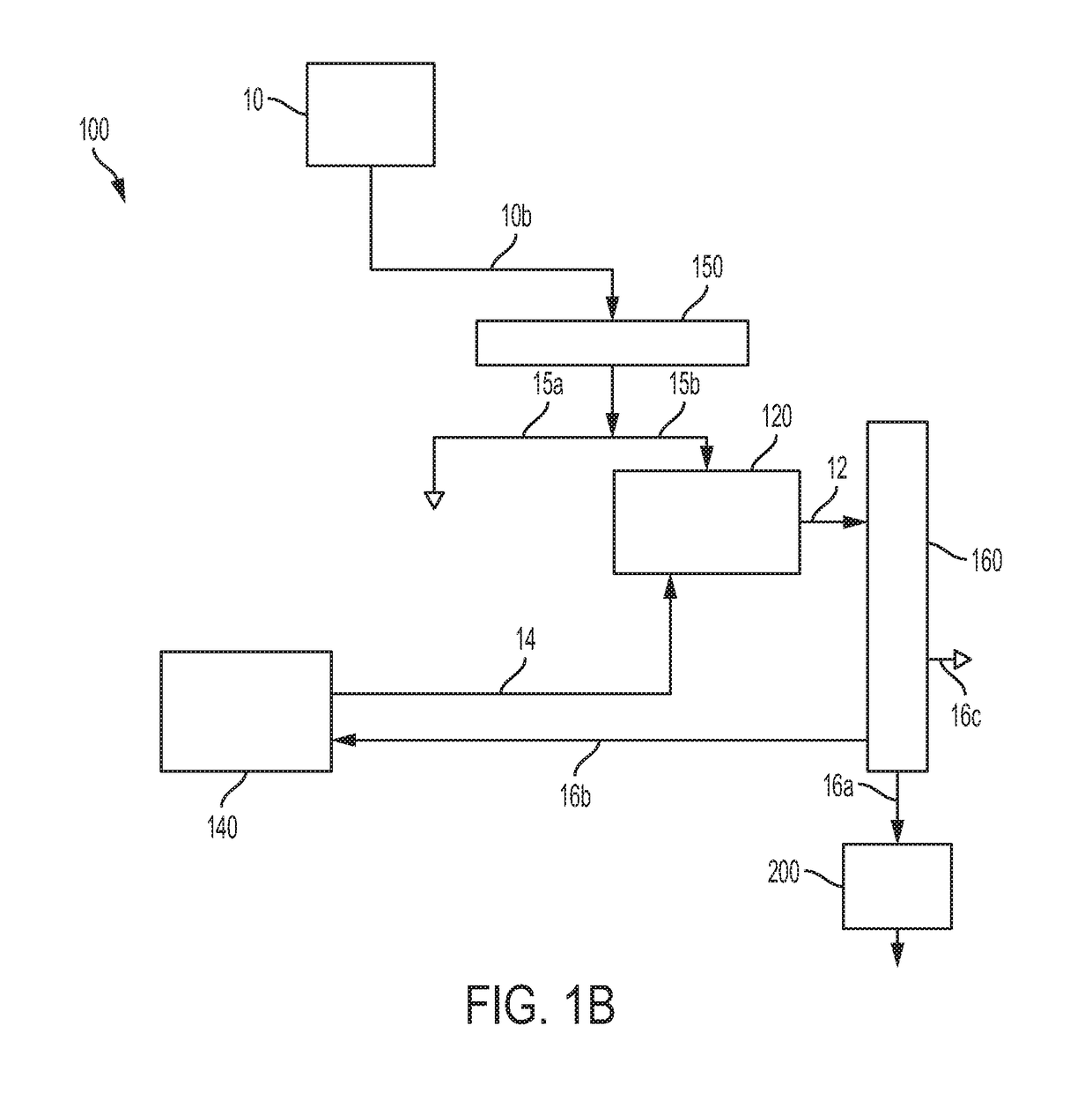Systems and methods for separation and extraction of heterocyclic compounds and polynuclear aromatic hydrocarbons from a hydrocarbon feedstock
a technology of heterocyclic compounds and hydrocarbon feedstocks, applied in the field of hydrocarbon processing, can solve the problems of heavy distillates, unfavorable commercialization, and inconvenient recovery or extraction of these larger macromolecules
- Summary
- Abstract
- Description
- Claims
- Application Information
AI Technical Summary
Benefits of technology
Problems solved by technology
Method used
Image
Examples
Embodiment Construction
[0025]Embodiments of methods for separating and extracting organic heteroatom compounds and polynuclear aromatic hydrocarbons from a hydrocarbon feedstock containing the organic heteroatom compounds and the polynuclear aromatic hydrocarbons will be described. The methods of separating and extracting organic heteroatom compounds and polynuclear aromatic hydrocarbons from a hydrocarbon feedstock may include treating crude oil or fractions having high asphaltene concentration prior removing the heteroatom compounds from the hydrocarbon feedstock by extraction, followed by removing the polynuclear aromatic hydrocarbons in a solvent system.
[0026]As used in this disclosure, the term “polynuclear aromatic hydrocarbon” or “PAH” refers to a hydrocarbon compound having multiple aromatic rings, in which at least two of the multiple aromatic rings are fused, that is, the multiple aromatic rings share at least one side such that at least two carbon atoms are common to two aromatic rings. Polynuc...
PUM
 Login to View More
Login to View More Abstract
Description
Claims
Application Information
 Login to View More
Login to View More - R&D
- Intellectual Property
- Life Sciences
- Materials
- Tech Scout
- Unparalleled Data Quality
- Higher Quality Content
- 60% Fewer Hallucinations
Browse by: Latest US Patents, China's latest patents, Technical Efficacy Thesaurus, Application Domain, Technology Topic, Popular Technical Reports.
© 2025 PatSnap. All rights reserved.Legal|Privacy policy|Modern Slavery Act Transparency Statement|Sitemap|About US| Contact US: help@patsnap.com



